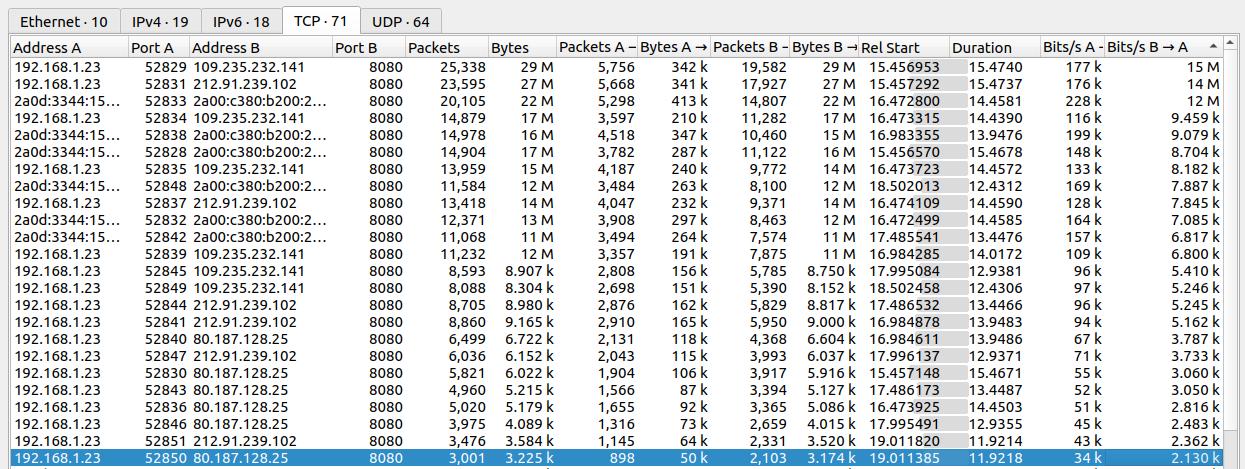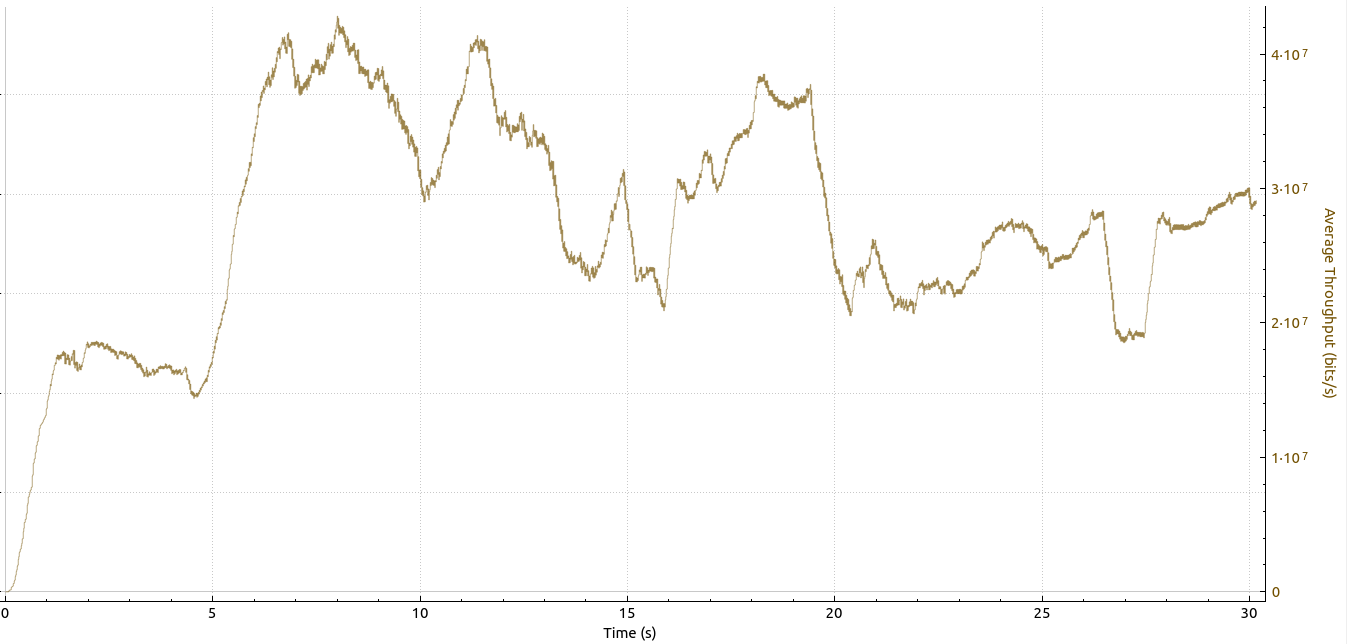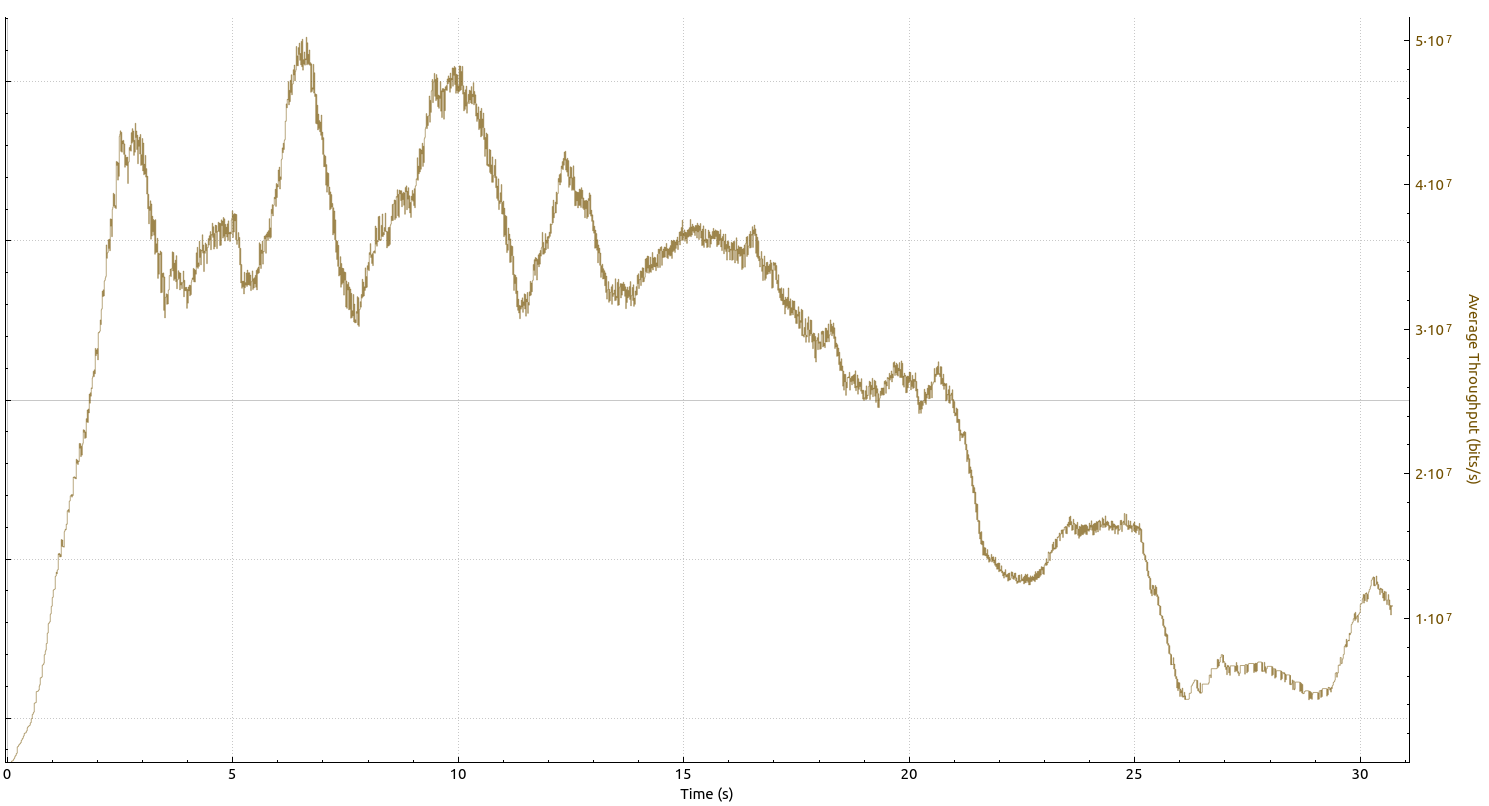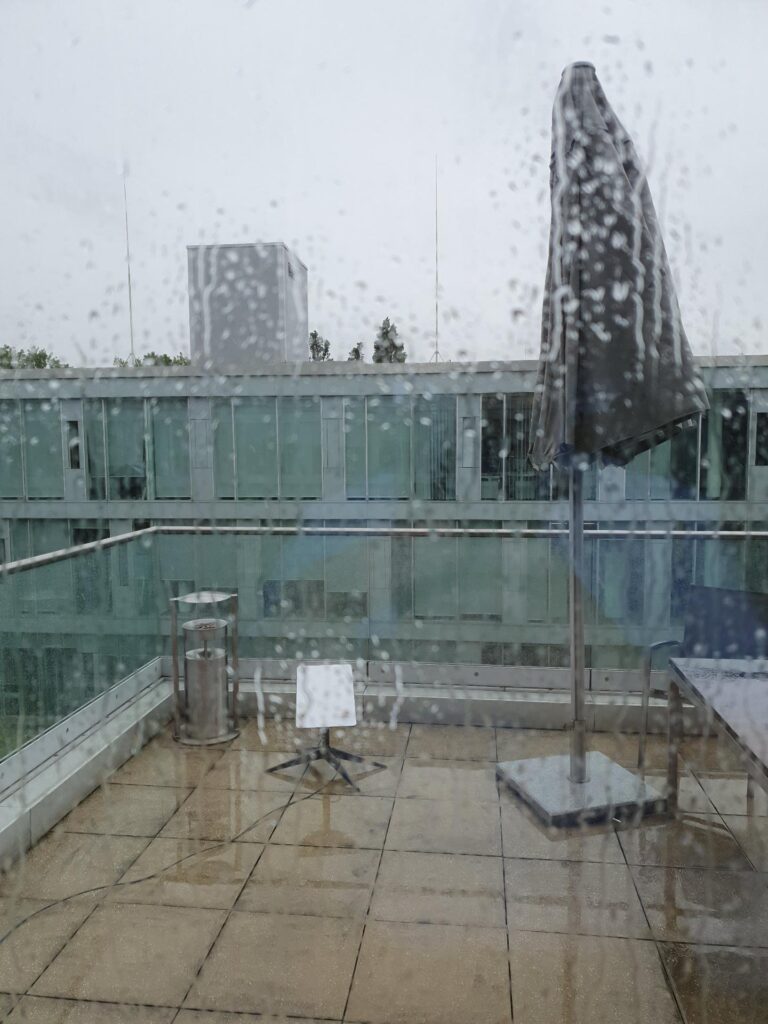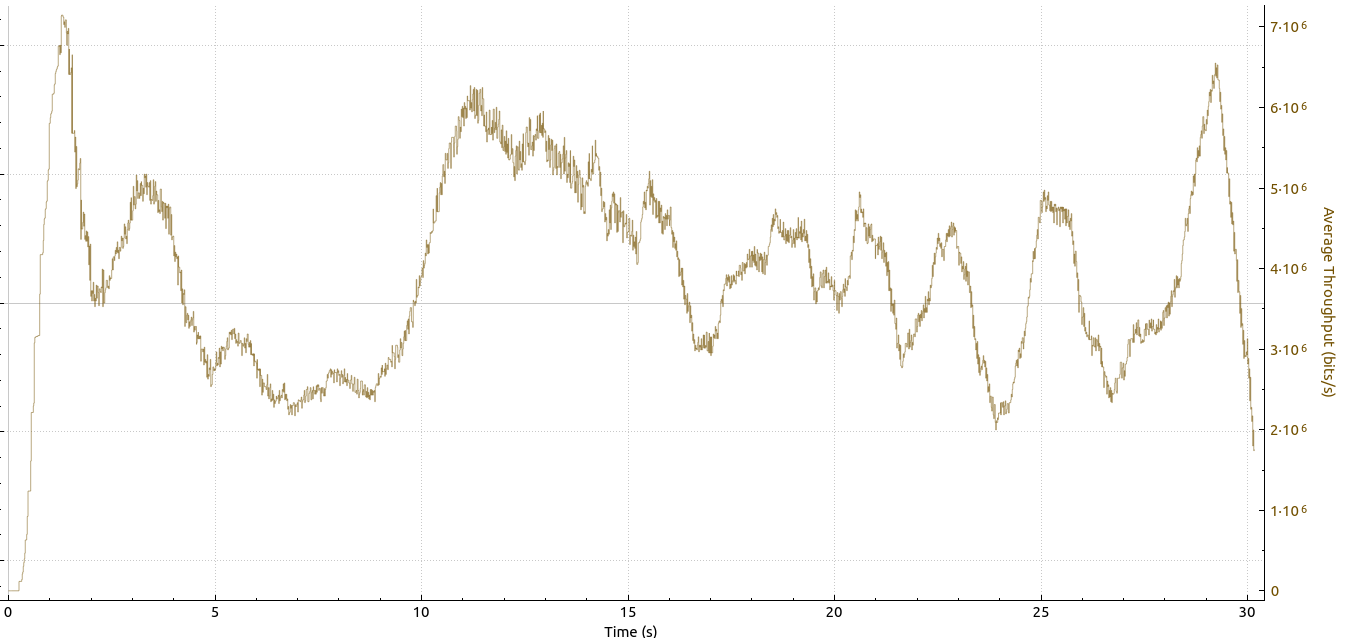
Part 8 of this series took a closer look at the downlink performance of two Windows 11 based machines over Starlink. This episode now takes a closer look at the uplink.
Before I go on, let’s set expectations: As was shown in part 5 and 6, there is a significant difference in uplink performance on Linux machines depending on which TCP congestion avoidance algorithm is used. With the default TCP Cubic algorithm, throughput was around 5 Mbps, whereas TCP BBR pushed uplink throughput to 30 Mbps.
So here’s how uplink throughput looks like on Windows with the default TCP parameters:
Continue reading Starlink – Part 10 – Windows over Starlink – Uplink Performance